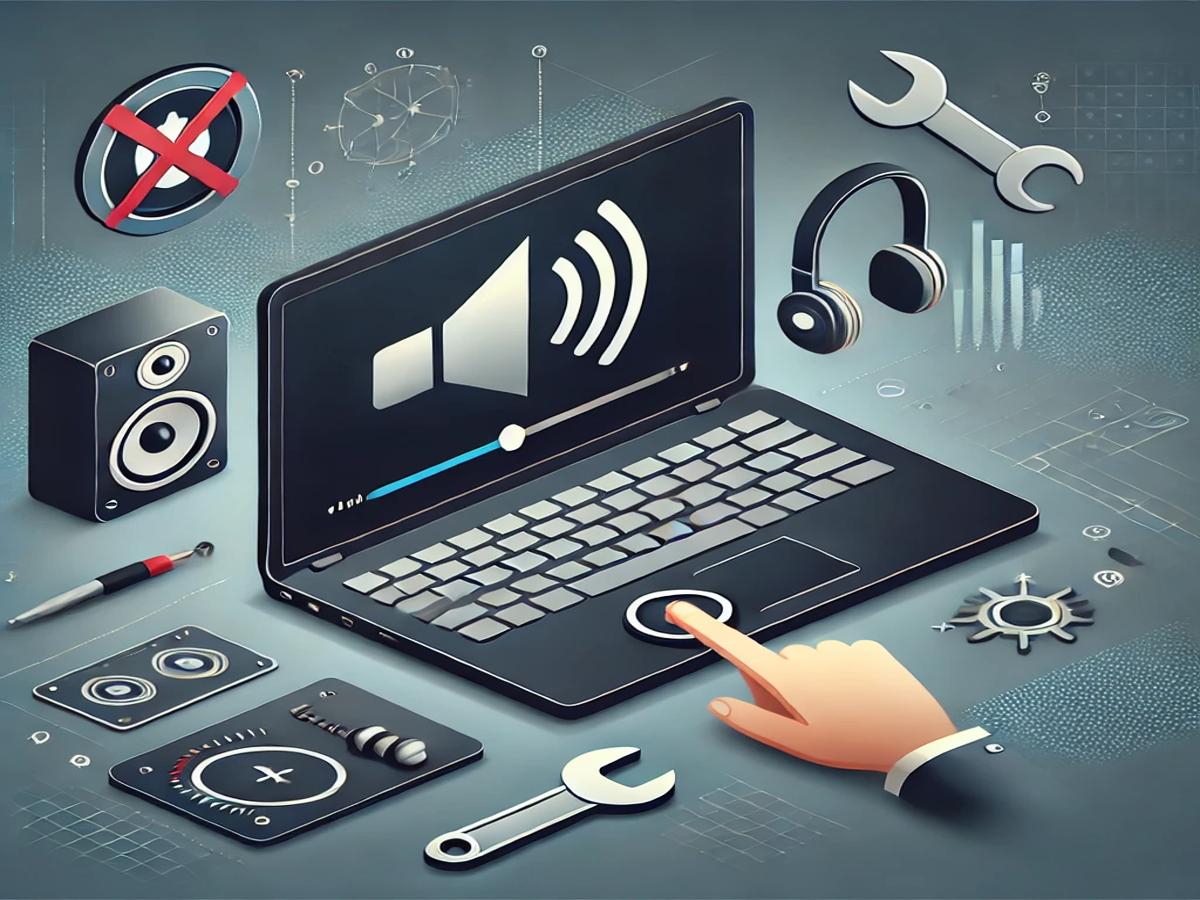You’re about to join a virtual meeting, or maybe you’re just trying to relax with some music, and boom—your laptop’s sound decides to quit on you. Frustrating, isn’t it? Laptop audio issues are more common than you might think and can stem from a variety of reasons. The good news? Most of these problems are fixable without a trip to the repair shop. Let’s dive in to uncover why your laptop’s sound isn’t working and how to fix it.
Common Reasons for Laptop Audio Problems
Hardware Issues
Hardware problems are often the root cause of audio issues. A faulty audio jack, damaged internal speakers, or wear and tear on internal sound components can lead to poor or no sound output. For instance, constant plugging and unplugging of headphones might loosen the jack over time.
Software Issues
Your laptop’s software plays a critical role in delivering sound. Outdated or corrupted audio drivers can break this chain, while software conflicts—such as two programs trying to control audio output simultaneously—might also lead to issues.
External Factors
Sometimes, the problem lies outside your laptop. Misconfigured audio settings, incompatible devices, or interference from connected peripherals can disrupt sound output.
How to Diagnose Audio Problems
Diagnosing the issue is the first step toward fixing it. Here’s how to start:
Check Volume and Mute Settings
Yes, it sounds basic, but you’d be surprised how often muted volume or low system settings cause frustration. Ensure that both your system volume and the application volume are turned up.
Test with External Devices
Connect headphones or external speakers to your laptop. If they work, the problem might lie with the internal speakers or settings.
Use Built-In Audio Troubleshooter
Both Windows and macOS have diagnostic tools designed to identify and fix common audio issues. On Windows, right-click the sound icon and select Troubleshoot Sound Problems. For macOS, navigate to System Preferences > Sound and check output settings.
Boot in Safe Mode
Safe Mode disables unnecessary drivers and software, helping you determine if a third-party app or driver is causing the problem.
Quick Fixes for Common Audio Issues
Ensure Proper Volume Settings
Navigate to your system’s audio settings by right-clicking the sound icon. Confirm that no device is muted and that the volume levels are set appropriately.
Restart Your Laptop
A quick reboot can resolve temporary glitches. If your laptop has been running for a while, restarting it refreshes all processes, including audio drivers.
Check Audio Jack or Cable Connections
Inspect your headphone jack and cables for dust, damage, or looseness. Clean the jack with compressed air and ensure a secure connection.
Switch Default Playback Device
If you’ve recently connected external audio devices, your system might still prioritize them. On Windows, go to Sound Settings and select the appropriate playback device. For macOS, check System Preferences > Sound.
Advanced Fixes for Persistent Audio Problems
If the quick fixes didn’t work, try these advanced solutions:
Update or Reinstall Audio Drivers
- Press
Windows + Xand open Device Manager. - Expand Sound, Video, and Game Controllers.
- Right-click your audio driver and choose Update Driver.
- If this fails, uninstall the driver and reinstall it using the manufacturer’s website.
Reset Audio Settings
Restoring default audio settings can undo misconfigurations. On Windows, navigate to Sound Settings > Advanced Sound Options and reset all configurations. For macOS, reset the PRAM (Parameter RAM) by restarting your laptop and holding Option + Command + P + R.
Inspect and Update Operating System
Ensure your OS is up-to-date, as updates often include patches for audio-related bugs. On Windows, go to Settings > Update & Security. On macOS, check System Preferences > Software Update.
Check Third-Party Applications
Applications like Skype or Zoom sometimes override system audio settings. Adjust their audio configurations in their respective settings menus.
Resolving Hardware-Related Audio Problems
If software fixes don’t help, hardware might be to blame:
Repair or Replace Audio Jacks
Over time, audio jacks can loosen or wear out. If cleaning doesn’t help, professional repair might be necessary.
Test Built-In Speakers
Play audio through built-in speakers using various applications. If only one speaker works or sound quality is distorted, internal components might be damaged.
Replace Internal Audio Hardware
In cases of severe damage, replacing the laptop’s sound card or motherboard components might be the only solution.
Preventing Future Audio Problems
Avoid future audio hassles with these tips:
- Regular Updates: Keep drivers and operating systems up-to-date.
- Gentle Handling: Be mindful of how you plug in and remove headphones.
- Quality Accessories: Invest in reliable headphones and adapters to reduce wear and tear.
When to Contact Professional Help
If your sound issues persist despite trying all fixes, it’s time to seek expert assistance. Look for authorized service centers or certified technicians to avoid further damage.
Conclusion
Laptop audio issues can be a real pain, but most problems are manageable with the right approach. From simple adjustments like volume settings to advanced solutions like driver updates, there’s a fix for almost every sound problem. Don’t let these hiccups disrupt your productivity—take action today and restore crisp, clear audio.
FAQs
1. Why is there no sound on my laptop?
Common reasons include muted volume, driver issues, or damaged hardware.
2. Can malware affect laptop audio?
Yes, certain types of malware can disrupt system processes, including audio output.
3. How can I fix crackling sound from my laptop speakers?
Adjust audio settings, update drivers, and check for damaged hardware to resolve crackling issues.
4. Why does my laptop’s audio work intermittently?
Intermittent sound often results from loose connections, driver conflicts, or overheating components.
5. How much does it cost to repair laptop audio hardware?
Repairs can range from $50 to $300, depending on the extent of the damage and the model.
















